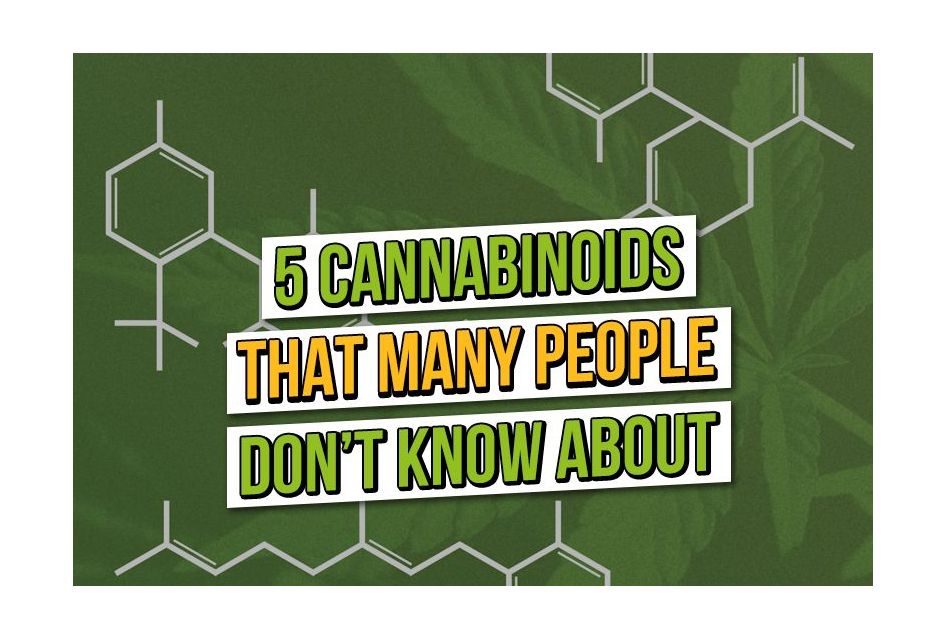There are over 120 cannabinoids in a cannabis plant, so why could most people only name two? That's because THC and CBD - the two in question - are the most studied. One gets you high (THC), and the other (CBD) is legal in most places in Europe. But what about the others? There are over 120 cannabinoids, and we learn more about them daily, though we still have little knowledge. However, we want to share what we know with you, so let us briefly introduce you to five less-known cannabinoids and what they do.
Before we start, no one is asking you to pronounce the compound names of these cannabinoids. However, you might be surprised by some of their effects. Is it time to say bye-bye to the munchies, and could one of these compounds be game-changing for medicine?
What are cannabinoids?
Cannabinoids are the chemical compounds present in cannabis plants. Once consumed, they interact with a complex network of receptors called the endocannabinoid system (ECS). You might hear these referred to as CB1 and CB2. ECS are present in humans and other mammals, which might explain why people and animals like to get high.
The most studied and, as a result, most famous cannabinoids are THC and CBD. We know all about their properties, what they do and the best ways to apply them.
Tetrahydrocannabinol (THC) - The one we all know and love - the primary psychoactive compound in cannabis and what gets users high.
Cannabidiol (CBD) - CBD is non-psychoactive, so it does not get you high. There are countless studies on the benefits of taking CBD for various conditions, such as anxiety.
However, we are still learning about the other 120+ and their properties. So what are they? Do you know your CBD from your CBN? Let's get started and uncover some cannabinoids you might not know about.

5 Lesser Known Cannabinoids
Cannabigerol (CBG): Some experts are calling this the 'mother of all cannabinoids'; others call it the 'stem cell' cannabinoid. For now, we will call it CBG, but what is CBG, and what does it do? CBG is non-intoxicating and a precursor to THC and CBD. So, it is the starter cannabinoid. The one that gets it all going. Plants tested at the early stages of growth will present an abundance of CBG, but other cannabinoids, such as THC and CBD, dominate as the plant develops. More research is needed, but evidence so far states that CBG can help improve sleep and reduce anxiety and chronic pain. If you want to grow a CBG-rich plant, you don't have to wait - CBG-Force by Dutch Passion is available here.
Cannabichromene (CBC): There needs to be more information about CBC, but we know it does not affect thinking (non-psychoactive). However, the boffins believe it affects the brain and nerves and impacts swelling and pain. Where CBC, like so many cannabinoids, comes into its own is when it starts working with other compounds to create an entourage effect.
Tetrahydrocannabivarin (THCV): THCV has got cannabis breeders all excited. The recent uncovering of THCV has already led to strains like THC-Victory and Purple Boost, but what is it, and what does it do? THCV is similar to THC but produces different effects. Early research suggests it is an appetite suppressant and could help with weight management. (So much for stoner stereotypes). Moreover, THCV might have anticonvulsant properties, which could literally be a life changer for people with epilepsy.
Cannabinol (CBN): Not to be confused with CBD and CBG, CBN is a mild version of THC. Yes, that's right, CBN will get you a little high. 25% as much as THC, in fact. So CBN shares many of the same benefits as THC, only it's not as potent. Lesser potency is attractive for users who want to find a balance between the non-psychoactive CBD and the often rocket-ship highs of THC.
Cannabidivarin (CBDV): Last and, in this case, probably least, CBDV. We say least because CBDV is a lot like CBD. This one is likely more effective in a big gang of other cannabinoids. But who knows what we will find out about it with further research.
Conclusion:
There's a lot to learn about cannabinoids, but what we have learned so far is fascinating. Don't forget you can grow with strains rich in some of the cannabinoids we've mentioned. If they don't tickle your pickle and you want to stick to want, you know. We've got plenty of THC and CBD-rich strains here. Schools out for now! Until next time, happy growing.

